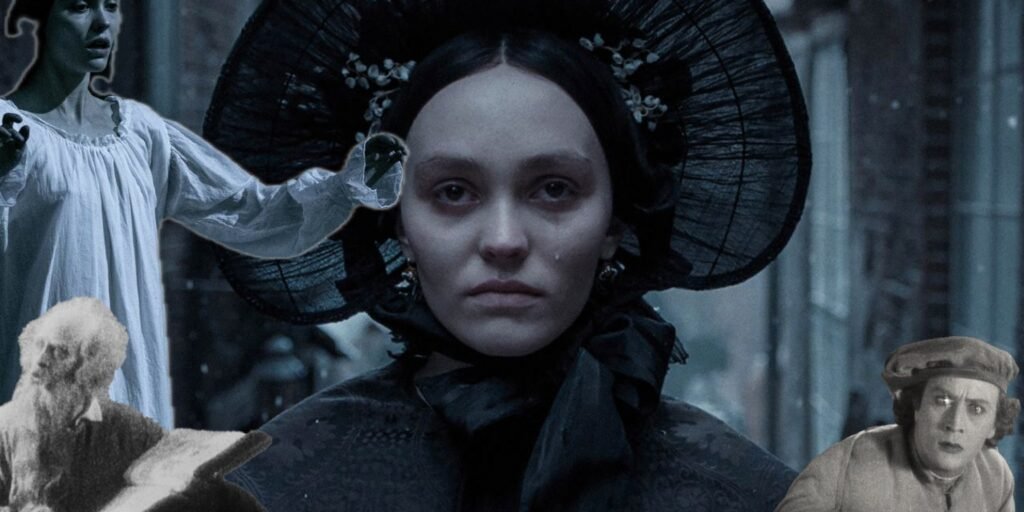Remakes hardly ever get any higher than Nosferatu (2024). Primarily based on the 1922 movie Nosferatu: A Symphony of Horror from influential German director F.W. Murnau, Robert Eggers’ Nosferatu is a gorgeously darkish story of obsession, insanity, and loss of life. The movie’s wealthy Gothic aesthetic makes it really feel like an prompt basic for the style, so it ought to come as no shock that its creation is steeped in movie historical past.
In varied interviews, Robert Eggers—the author, director, and producer of Nosferatu—talks concerning the varied films that impressed him whereas creating his newest masterpiece. Listed under is a choice of the films he’s spoken about (and the place you’ll be able to watch them) so you’ll be able to marathon just a few of the movies that helped form this new incarnation of Nosferatu.
After all, when you simply wish to see extra Nosferatu, take a look at these films:
However listed here are another much less recognized films to think about inside the identical canon.
The Films that Impressed Nosferatu
Possession (1981)
For those who’ve seen Lily-Rose Depp’s charming portrayal of a girl possessed in Nosferatu, and when you’ve additionally seen Isabelle Adjani’s mesmerizing efficiency in Possession, you then’re certain to note the similarities. In an article posted by Mia Lee Vicino on Letterboxd, Robert Eggers is quoted as saying that he knew Lily-Rose was proper for the position of Ellen Hutter when she “instantly introduced up Possession.” As for the comparisons between herself and Adjani, Depp says it’s “excessive reward” to be in comparison with such an unbelievable actress.
Svengali and Nosferatu are comparable in that they each function an imposing male determine who’s trying to supernaturally coerce a girl to bend to his will. In Svengali, the technique of coercion is hypnotism. There’s a particular scene about 35 minutes into the film during which Svengali (John Barrymore) makes use of his thoughts to name to his goal, the gorgeous Trilby O’Farrell (Marian Marsh), from far-off. His energy travels throughout the town and rouses Trilby from her mattress. Robert Eggers mentions this sequence as a tonal affect on an analogous scene in Nosferatu when Depend Orlok casts his shadow throughout Wisborg, Germany.
Given its roots within the German Expressionism of F.W. Murnau’s 1922 Nosferatu, its no shock that Robert Eggers was additionally impressed by one other of Murnau’s movies. Whereas talking to DC Film Girl throughout an interview, Eggers mentions Faust (1926) when discussing a few of his movie’s imagery. In Faust, Mephisto spreads his wings over a village to suggest the plague he has unleashed on its inhabitants. This placing picture was an inspiration for Eggers when he depicted the plague Orlok brings with him as a shadow spreading all through the city.
Robert Eggers spoke to Alamo Drafthouse for his or her “Guest Selects” sequence, and he gave them an inventory of some different movies that impressed Nosferatu. First on his record is The Innocents (1961). Directed by Jack Clayton and filmed by Freddie Francis, The Innocents is among the most haunting Gothic ghost stories ever placed on movie. Robert Eggers agrees with that evaluation, and he says he watches the film typically for inspiration. For Nosferatu particularly, he advised Alamo Drafthouse that what Freddie Francis “does with the digicam was very inspiring for what my cinematographer and I had been as much as in Nosferatu.”
The environment and performances in Cries and Whispers are the most important influences on Nosferatu. The movie, written and directed by Ingmar Bergman, is a few girl with terminal most cancers who’s visited in her remaining days by her two sisters. It’s a transferring drama that Robert Eggers describes to Alamo Drafthouse as “probably the greatest horror movies ever made, despite the fact that it actually doesn’t attempt to be one and wouldn’t be categorized as one.” He says that when he directed his actors in Nosferatu, he typically thought concerning the performances in Cries and Whispers.
When crafting the environment of Nosferatu, significantly in the direction of the top of the film, Robert Eggers says he drew inspiration from The Queen of Spades. The movie is a few man who turns into obsessive about studying the secrets and techniques of a girl who’s believed to have offered her soul as a way to amass a fortune enjoying playing cards. Robert Eggers admires the camerawork and the composition of the pictures in The Queen of Spades, and he tried to emulate that very same feeling in Nosferatu.
